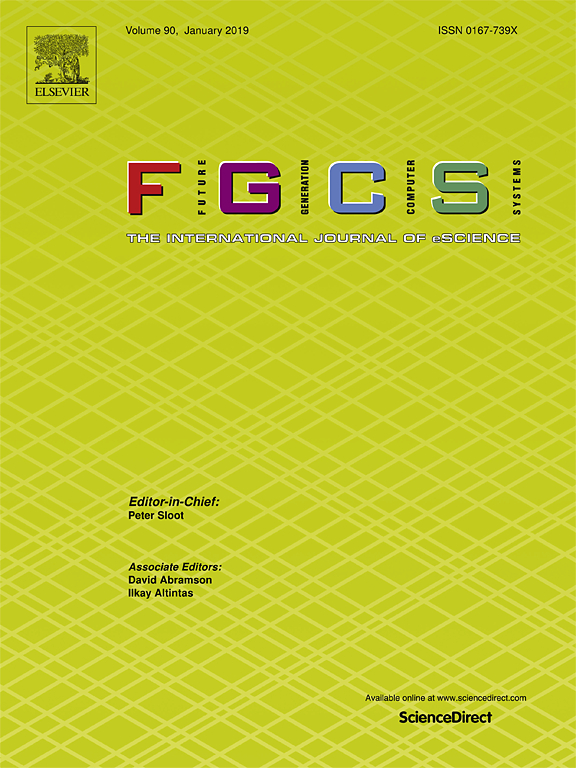
Future Generation Computer Systems (FGCS) - Volume 85 论文列表
| 点击这里查看 Future Generation Computer Systems 的JCR分区、影响因子等信息 |
| 卷期号: Volume 85 |
| 发布时间: August 2018 |
| 卷期年份: 2018 |
| 卷期官网: https://www.sciencedirect.com/journal/future-generation-computer-systems/vol/85/suppl/C |
本期论文列表
Editorial Board
User mobility aware task assignment for Mobile Edge Computing
Research on anomaly detection algorithm based on generalization latency of telecommunication network
An intelligent healthcare system for detection and classification to discriminate vocal fold disorders
BG: A scalable benchmark for interactive social networking actions
Marine surveying and mapping system based on Cloud Computing and Internet of Things
Automatic road detection system for an air–land amphibious car drone
Benchmarking top-k keyword and top-k document processing with T2K2 and T2K2D2
Edge-centric multimodal authentication system using encrypted biometric templates
A deep Recurrent Neural Network based approach for Internet of Things malware threat hunting
Performance prediction model for cloud service selection from smart data
Research on data fusion algorithm and anti-collision algorithm based on internet of things
Low-latency orchestration for workflow-oriented service function chain in edge computing
RETRACTED: A hybrid whale optimization algorithm based on local search strategy for the permutation flow shop scheduling problem
Remote analysis of myocardial fiber information in vivo assisted by cloud computing
An approach to examine Magnetic Resonance Angiography based on Tsallis entropy and deformable snake model
Resource-aware virtual machine migration in IoT cloud
Automated system for the detection of thoracolumbar fractures using a CNN architecture
Privacy-preserving multi-channel communication in Edge-of-Things
Localization of a high-speed train using a speed model based on the gradient descent algorithm
SERAC3: Smart and economical resource allocation for big data clusters in community clouds
A benchmark approach and its toolkit for online scheduling of multiple deadline-constrained workflows in big-data processing systems
Building situational awareness for network threats in fog/edge computing: Emerging paradigms beyond the security perimeter model

